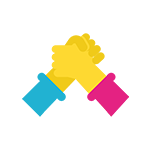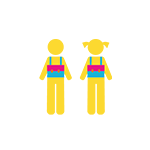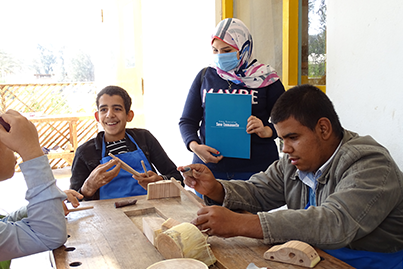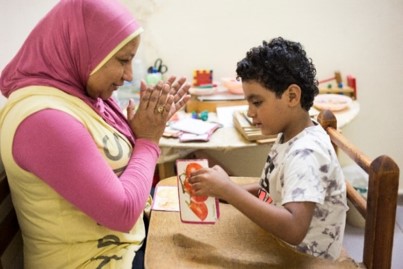- 20% of the Egyptian population lives below the poverty line (UNICEF, 2015)
- 17% of women between the ages of 20 and 24 report having been married before the age of 18 (UNICEF, 2015)
- 8-12 million people in Egypt have disabilities (WHO, 2018)
- 93% of children aged 1 to 14 have experienced physical or psychological violence (UNICEF, 2019)

EGYPT
COUNTRY CONTEXT
AREAS OF INTERVENTION

KEY FIGURES

1998
we set up in the country

4
projects in progress

5
partners

2 750
beneficiaries in 2023
OUR ACTIONS IN THE FIELD
Background information
Egypt is the most populated country in the Middle East, and the second most populated in Africa. Almost a quarter of the population lives below the poverty line.
Moreover, the population is very young (33% of the population is under 14 years old, and 11.2% is aged between 0 and 4 years old). Despite considerable efforts, access to education is still a problem for many children, especially those from rural areas. An estimated 1.4 million children between the ages of 6 and 17 have never had access to education or have had to drop out of school before the end of primary school.
The country also faces major challenges in child protection. Many young people suffer from abuse, mistreatment, exploitation and lack of appropriate care. According to UNICEF, 93% of children aged 1 to 14 have been victims of physical or psychological violence.
In Egypt, the majority of people with disabilities are excluded, discriminated against and have no access to public services. Protection committees in schools are inefficient. Indeed, adapted schools are very rare or non-existent, even though 11% of the 95 million inhabitants have disabilities.
Intervention objectives
Currently, Asmae provides financial and skilled support to our partners for 1 project in Cairo. We have multiple objectives in the areas of adolescence support and the care of children with disabilities:
- To develop the personal and professional potential of the most vulnerable adolescents and adolescents and to prevent the risks they face during this period of their lives. This means supporting young people in developing their skills, but also by working with their families and communities (including local associations), Asmae encourages them to be actors of their future in an environment that contributes to it;
- Offer support to young girls and boys with disabilities by strengthening the capacities of local actors involved in this field;
- Fight for change in the way disability is viewed by raising awareness and carrying out advocacy actions in local communities. Through its projects, Asmae’s main goal is to help young people have access to quality education that is adapted to everyone.
OUR PROJECTS

Cap Jeunesse
Project start date: January 2021
Project duration: 3 years
Beneficiaries: educators and teachers, young people aged 12 to 22, with special attention to young people with disabilities
Partners:
- Basmet Amal;
- Kayan “Society For Persons with Disabilities”.
Project:
This project, which is part of the Cap Jeunesse programme, aims to improve the quality of inclusive education, integration and socio-professional support for young Egyptians in Cairo.
The aim is to help these young people prepare for their professional life and defend their rights. With the help of our partners, Asmae trains teachers and educators in inclusive pedagogy and puts in place a protection policy for these child victims of exclusion.

PEACE – A safer environment for children in the slums of Manshiet Nasr, Ezzbet el Nakhl and El Marg in Cairo
Project start date: January 2022
Project duration: 3 years
Beneficiaries: children/youth aged 6 to 17 and their parents, teachers, educators, management staff of the partner NGO, community leaders and 2 schools.
Project:
The project aims to strengthen social services and protection mechanisms for marginalised children living in the ragpickers districts of Manshiyat Naser, Ezbet El Nakhl and El Marg. The action targets children, teachers, school management, families and the surrounding community. Protection training and awareness-raising workshops on children’s rights are held for communities, children and adolescents.
